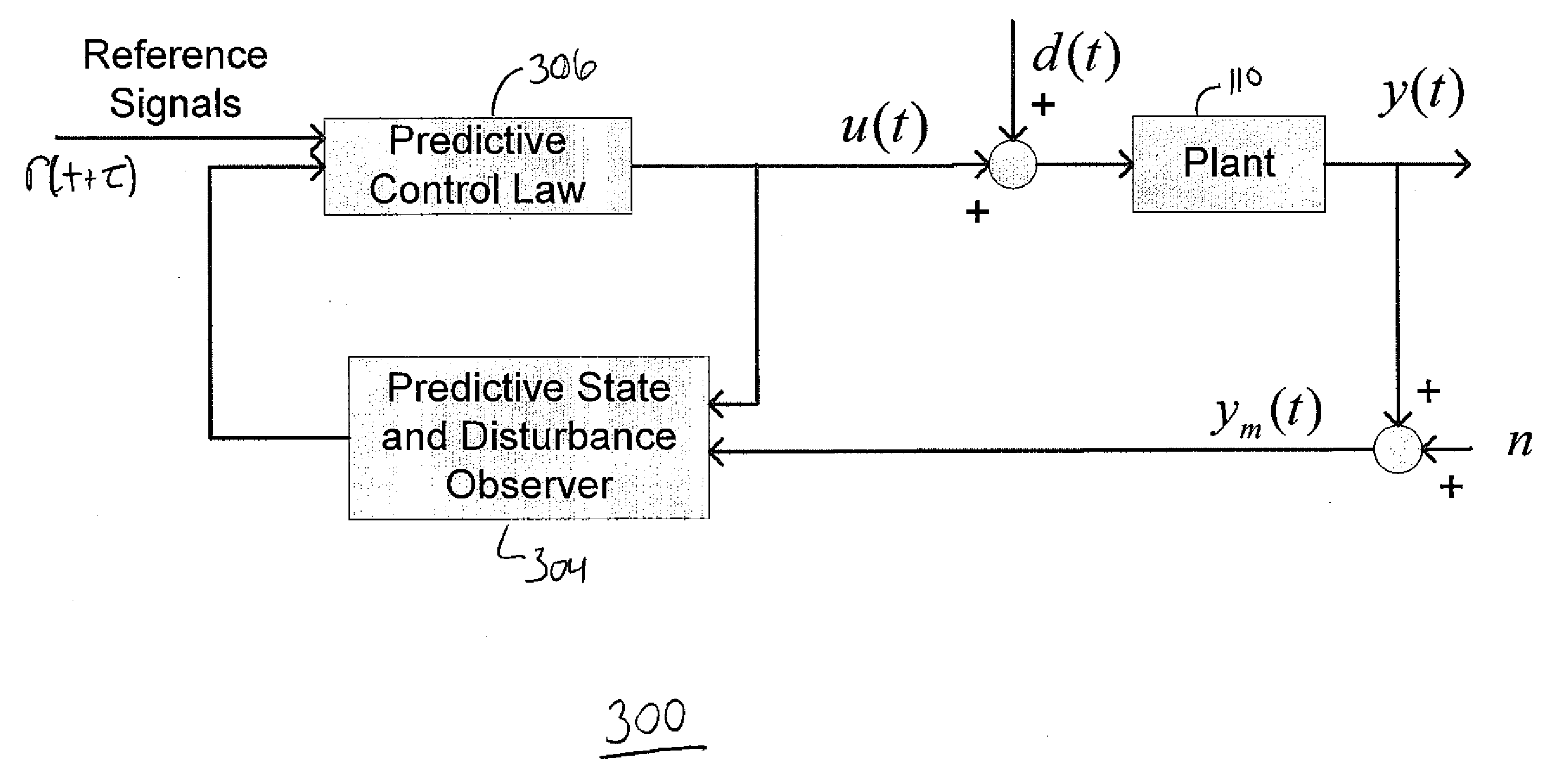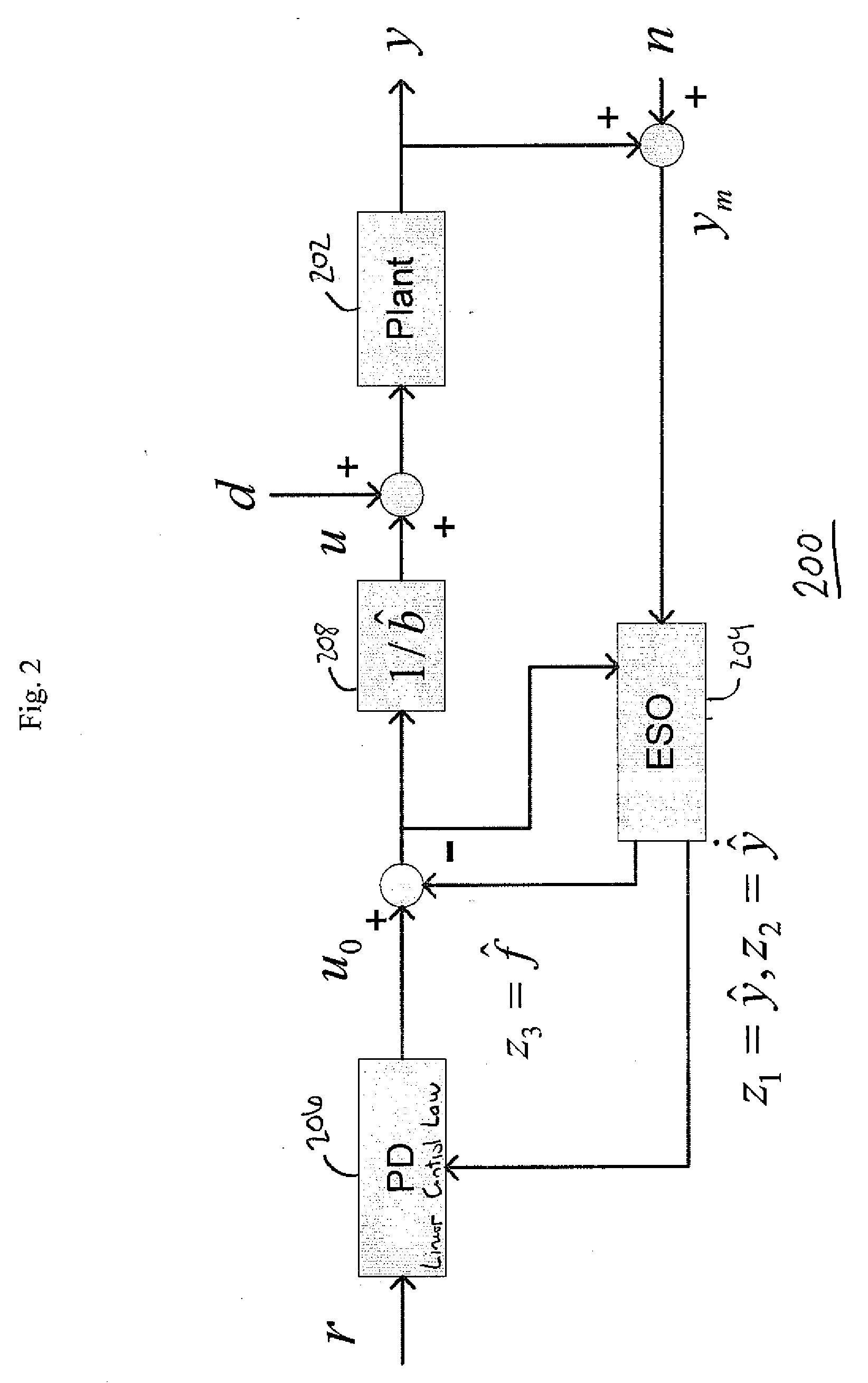Extended Active Disturbance Rejection Controller
a controller and active disturbance technology, applied in the field of controllers, systems and methods for feedback control of various systems, can solve problems such as inability to meet engineering requirements, inability to meet requirements, and risk to stability and performance, so as to improve the state estimator or predictor, improve performance, and enhance the effect of control law
- Summary
- Abstract
- Description
- Claims
- Application Information
AI Technical Summary
Benefits of technology
Problems solved by technology
Method used
Image
Examples
Embodiment Construction
[0046]Multiple embodiments of a system, device, and method for the control of systems are presented herein. Those of ordinary skill in the art can readily use this disclosure to create alternative embodiments using the teaching contained herein.
[0047]The following terms used herein have the meanings as follows. As used herein the term “computer component” refers to a computer and elements of a computer, such as hardware, firmware, software, a combination thereof, or software in execution. For example, a computer component can include by way of example, a process running on a processor, a processor, an object, an executable, an execution thread, a program, and a computer itself. One or more computer components can in various embodiments reside on a server and the server can be comprised of multiple computer components. One or more computer components are in some cases referred to as computer systems whereby one or more computer components operate together to achieve some funct...
PUM
 Login to View More
Login to View More Abstract
Description
Claims
Application Information
 Login to View More
Login to View More - R&D
- Intellectual Property
- Life Sciences
- Materials
- Tech Scout
- Unparalleled Data Quality
- Higher Quality Content
- 60% Fewer Hallucinations
Browse by: Latest US Patents, China's latest patents, Technical Efficacy Thesaurus, Application Domain, Technology Topic, Popular Technical Reports.
© 2025 PatSnap. All rights reserved.Legal|Privacy policy|Modern Slavery Act Transparency Statement|Sitemap|About US| Contact US: help@patsnap.com



